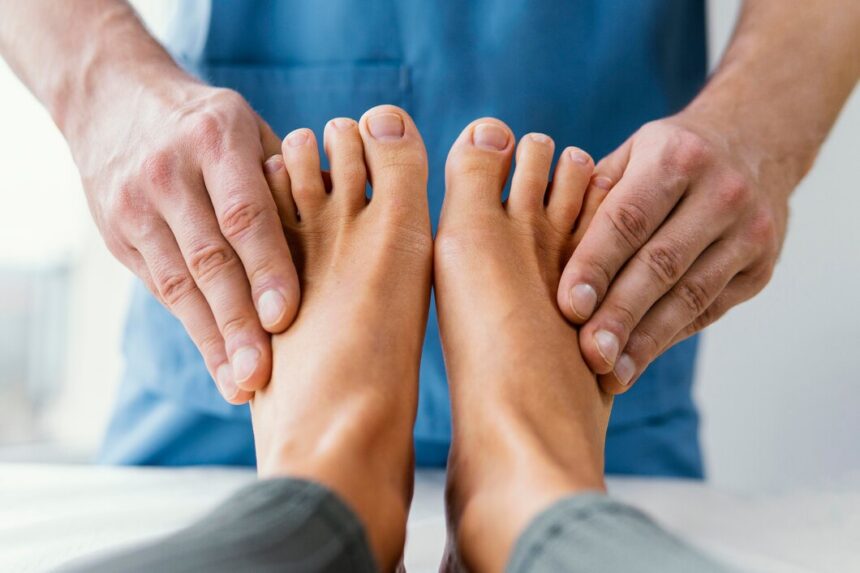Hallux rigidus is a condition characterized by the stiffening of the big toe joint, resulting in limited mobility and pain. This article explores the symptoms, causes, and treatments for this condition.
Symptoms
The primary symptom of hallux rigidus is pain in the big toe, particularly around the joint at the base of the toe. This pain often worsens with activities that involve bending the toe, such as walking or climbing stairs. Other symptoms include:
- Stiffness: Difficulty in moving the big toe up and down.
- Swelling and Inflammation: The joint may appear swollen and feel warm to the touch.
- Bone Spurs: Hard, bony growths may develop around the joint.
- Reduced Range of Motion: Limited ability to flex or extend the toe.
Causes
Hallux rigidus is typically caused by arthritis or other degenerative joint diseases. The most common factors include:
- Osteoarthritis: The most frequent cause, where the cartilage in the big toe joint deteriorates over time.
- Injury: Previous trauma to the toe, such as fractures or sprains, can contribute to the development of the condition.
- Genetics: A family history of arthritis or foot deformities can increase the risk.
- Foot Structure: Abnormalities in foot structure, such as high arches or bunions, may place extra stress on the toe joint.
Treatments
Treatment for hallux rigidus aims to alleviate pain, improve joint function, and prevent further deterioration. Options include:
Non-Surgical Treatments:
- Footwear Modifications: Wearing shoes with a stiff sole and a roomy toe box can reduce pressure on the toe joint.
- Orthotics: Custom-made insoles can help in distributing pressure more evenly and providing support.
- Medications: Nonsteroidal anti-inflammatory drugs (NSAIDs) can relieve pain and inflammation.
- Physical Therapy: Exercises and stretches can help maintain joint mobility and strength.
Surgical Treatments:
- Cheilectomy: A procedure to remove bone spurs and damaged cartilage to improve joint movement.
- Arthrodesis: Fusion of the toe joint to eliminate pain by making the joint immobile, which can be beneficial for advanced cases.
- Arthroplasty: Joint replacement surgery, where the damaged joint is replaced with an artificial implant.
Hallux rigidus can significantly impact daily activities due to pain and limited movement in the big toe. Early diagnosis and appropriate treatment are crucial in managing the symptoms and preventing further joint damage. If you suspect you have hallux rigidus, consult a healthcare professional for a comprehensive evaluation and personalized treatment plan.










